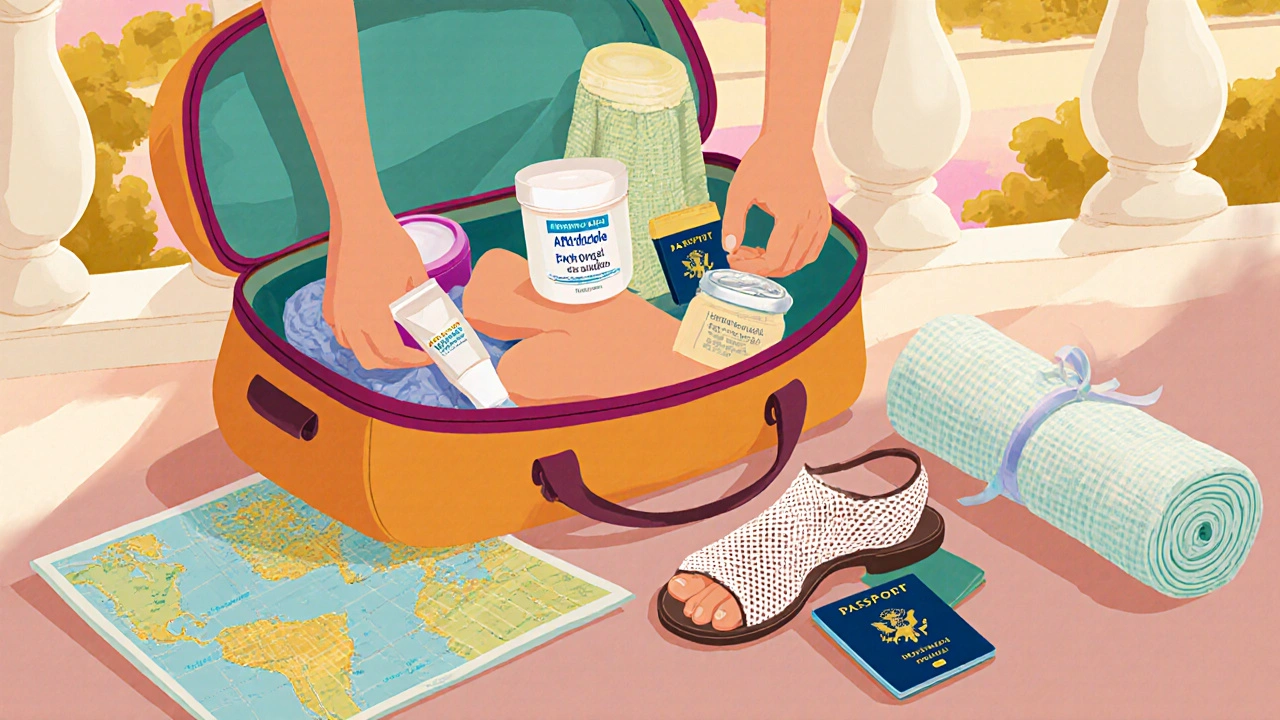Dermatophyte Infection: Causes, Symptoms, and Treatment
When talking about Dermatophyte infection, a fungal infection of the skin, hair, or nails caused by dermatophytes such as Trichophyton, Microsporum, and Epidermophyton. Also known as ringworm, it spreads through direct contact or contaminated surfaces and shows up as itchy, red, and often circular lesions. Dermatophyte infection can affect the feet (tinea pedis), groin (tinea cruris), scalp (tinea capitis), or body (tinea corporis). The condition is a type of superficial mycosis, meaning the fungus stays in the outer layers of the skin and rarely invades deeper tissues. Recognizing the classic ring‑shaped rash and knowing the common species helps you act fast and avoid long‑term skin damage.
Related Factors That Shape Management
One big player in today’s treatment decisions is Antifungal resistance, the reduced effectiveness of standard antifungal drugs caused by genetic changes in dermatophytes. When resistance pops up, doctors may need to switch from topical terbinafine to oral itraconazole or consider newer agents, which can affect cost and side‑effect profiles. Another frequently mentioned entity is Topical corticosteroid, a class of skin‑reducing medications that, if used without a proper diagnosis, can mask infection signs and even worsen fungal growth. Misusing a steroid cream on a hidden ringworm can delay proper treatment and lead to broader spread. Finally, Mycosis Fungoides, a rare cutaneous T‑cell lymphoma that may look like a chronic rash and sometimes gets confused with persistent dermatophyte infection. Distinguishing between a stubborn fungal infection and an early skin cancer requires a skin biopsy or advanced imaging, especially when lesions don’t respond to standard antifungals.
Effective diagnosis leans on simple tools: a potassium hydroxide (KOH) prep reveals branching hyphae under a microscope, while a fungal culture confirms the exact species. These tests are essential because they guide the choice between creams, powders, or oral pills and help avoid unnecessary steroid use. Prevention ties back to everyday habits—keep feet dry, wear breathable shoes, and change socks daily. Public spaces like gyms and locker rooms are hot spots for transmission, so showering immediately after workouts and using antifungal foot sprays can cut the risk. The articles in this collection touch on many of these points, from the rising problem of antifungal resistance to the careful balance between steroids and fungal treatments, and even broader topics like medication comparisons that can inform your choices.
Below you’ll find a curated set of posts that dive deeper into each of these angles. Whether you’re looking for the latest data on resistant strains, step‑by‑step guides for proper skin examinations, or practical tips on choosing the right antifungal product, the list provides actionable insights you can apply right away. Let’s explore the details together.

Top Prevention Strategies for Travelers at Risk of Ringworm
Learn proven ringworm prevention tactics for travelers, from packing antifungal gear to daily hygiene habits, early treatment steps, and post‑trip cleaning.
